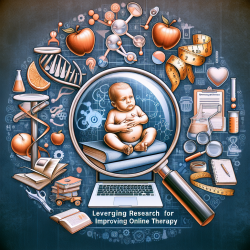In the realm of speech pathology, the pursuit of excellence and the quest for knowledge are never-ending. The field is ever-evolving, with new research and technologies continually reshaping our understanding and treatment of voice disorders. A prime example of such advancements is detailed in the research article "Voice Problems - Assessment and Management" by Nancy Chan and Linda Rammage. This comprehensive study not only deepens our understanding of vocal disorders but also provides valuable insights into the multi-dimensional aspects of voice therapy programs in British Columbia and Quebec.
For practitioners looking to refine their skills or expand their knowledge, this article is a treasure trove of information. It highlights the importance of an interdisciplinary approach in the assessment and management of voice disorders, underscoring the benefits of collaboration between speech-language pathologists, otolaryngologists, and other professionals in the field.
One of the key takeaways from the article is the critical role of technology in diagnosing and treating voice disorders. The authors discuss the use of tools such as videofluoroscopy, fiberoptic endoscopy, electroglottographs, stroboscopes, sound spectrographs, and oscilloscopes. These instruments not only aid in accurate diagnosis but also allow for the objective measurement of treatment effectiveness, enhancing the overall quality of care provided to patients.
The article also delves into the evaluation process, emphasizing the comprehensive assessment of vocal function, which includes measuring speaking pitch, singing range, voice quality, volume, resonance, and respiratory adequacy. Such detailed analysis enables clinicians to tailor their treatment plans effectively, addressing the unique needs of each patient.
Moreover, the concept of a circular model of etiology for voice disorders presented in the study is particularly enlightening. It suggests that voice disorders should not be viewed as simple cause-and-effect phenomena but rather as complex issues influenced by various factors, including emotional state, environmental demands, and physical health. This holistic perspective encourages practitioners to consider all possible contributing factors when devising treatment plans, thereby increasing the likelihood of successful outcomes.
The article also stresses the significance of patient education, counseling, and lifestyle modifications as integral components of voice therapy. By empowering patients with knowledge about the anatomy and physiology of voice production and guiding them through changes in vocal fold vibratory patterns, speech-language pathologists can help patients achieve more efficient voice use with minimal effort.
Another critical aspect highlighted is the value of interdisciplinary collaboration in patient care. The Voice Clinic at the University of British Columbia, for example, employs a team that includes an otolaryngologist, a speech-language pathologist, a psychiatrist, a consulting neurologist, a singing teacher consultant, and a bio-medical engineer. This collaborative approach ensures a comprehensive assessment and treatment plan, addressing all facets of a patient's voice disorder.
Finally, the article calls attention to the ongoing need for professional development and the importance of attending workshops, conferences, and symposiums. Such events not only provide clinicians with the latest research and methodologies but also offer opportunities for networking and collaboration, further advancing the field of speech pathology.
In conclusion, "Voice Problems - Assessment and Management" is a seminal piece that offers invaluable insights for speech-language pathologists and other professionals involved in the care of individuals with voice disorders. By implementing the outcomes of this research or engaging in further study, practitioners can significantly enhance their skills and the quality of care they provide. For those interested in delving deeper into the complexities of voice disorders and the innovative approaches to their management, I highly recommend reading the original research paper.
To read the original research paper, please follow this link: Voice Problems - Assessment and Management.










